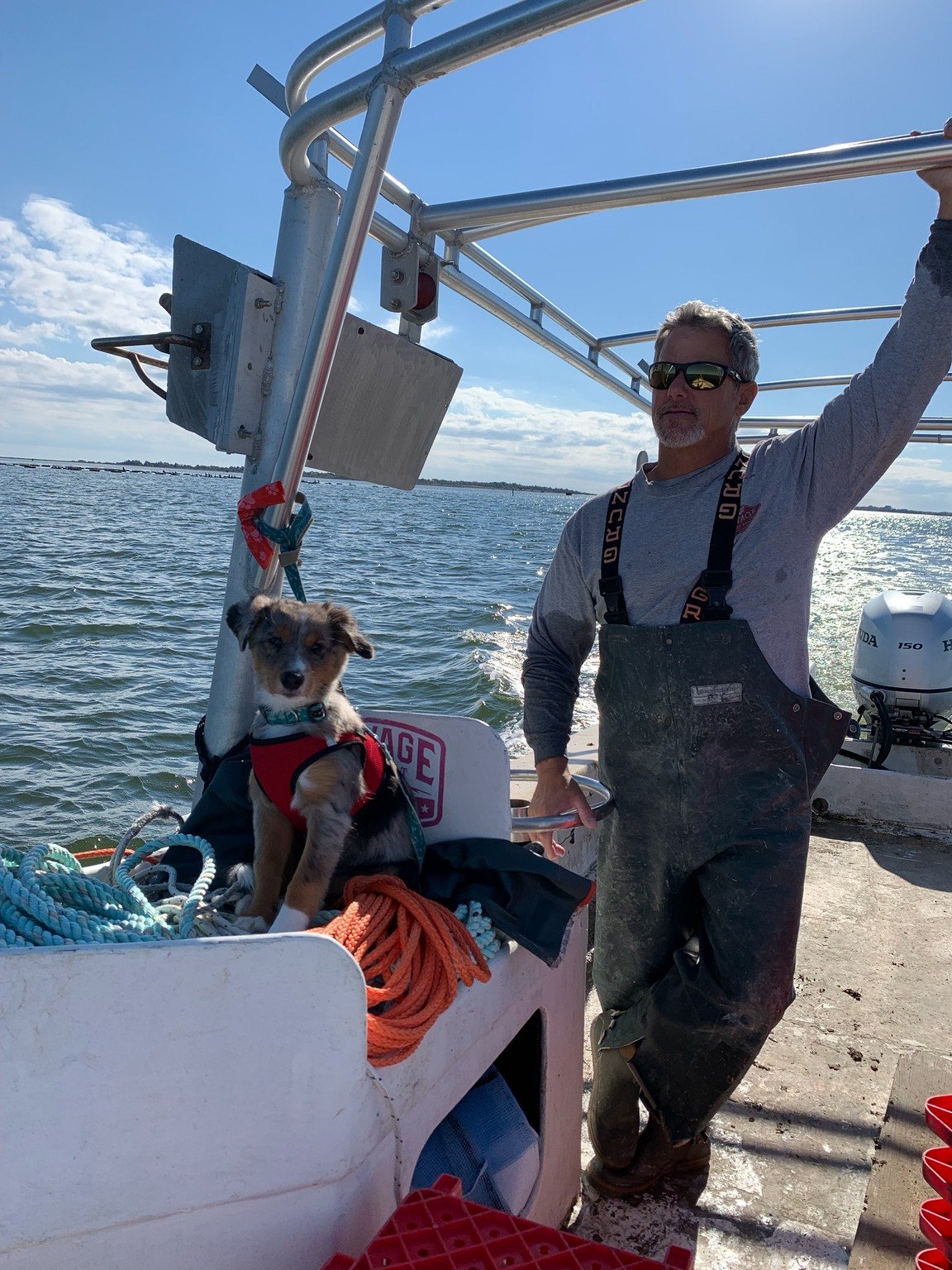Bivalve Bites: Firsthand Thoughts on FlipFarm
BIVALVE BITES: EASILY DIGESTIBLE OYSTER AQUACULTURE NEWS
Bobby Smith has been a commercial fisherman and charter boat caption for 38 years; he knows water work, building a company that both his wife and daughter have helped him with through the years. But he’s only been an oyster farmer for five years. He heard about it, got interested, met some other oyster farmers, and the more he learned, the more excited he got, seeing oyster aquaculture as a viable additional revenue stream. “I love oysters, and they clean the water, so I feel like I’m giving back, too,” he says. He started Savage Inlet Oysters in Oregon Inlet in North Carolina’s Outer Banks in 2017.
Smith may have started pretty fresh when he entered the oyster farmer category, but he’s a quick study and figured out fast how much labor was involved. That’s why FlipFarm, a semi-automated system invented in New Zealand that makes de-fouling and harvesting easier, more efficient and safer, grabbed his attention. When he implemented the system on his farm, he became one of the first — if not the first — to do so in United States. And while the challenges of getting up and running with it were many, he’s still a FlipFarm fan. Here, he explains why.
OS: What drew you to FlipFarm?
Bobby: I was interested in the idea of reducing my labor time on the farm, which is the big selling point of FlipFarm. I still do other work, like my charter boat operation, which ties up most of my time every summer. I contacted the owner and got more information and decided to give it a try. I was able to meet him and see the gear at an Oyster South symposium.
OS: You had a bit of a rough start, right?
Bobby: Yes. I made my order, and then for a lot of reasons, including, but not limited to, the pandemic, it took me a year to get it. There were multiple roadblocks. Part of it initially got sent to California instead of Virginia, where I had planned to pick it up. I finally got it, but then you have to put the system together, so that took time. Then, once it was set up, birds ate about a third of my floats. They’re now making the floats from hard plastic material, and I was able switch to those. But I still had to reassemble, so there was another delay.
OS: Despite all that, do you still think you made the right choice?
Bobby: Yes. Even with all the issues and headaches, I still believe in FlipFarm. Once I got it going, the oysters I’ve grown using it are a high-quality product, really beautiful. They are so much cleaner. The meat is great; the content seems meatier.
And I know it was FlipFarm that made the difference. I still have some floating cages, and that first summer, I had so much charter boat work — about 10 hours a day on just that — I kinda neglected the farm. And still, the oysters that came out of FlipFarm, side by side with those from the regular floating cages, were so much better. It was night and day.
It’s an expensive way to go for the volume I do, but in the long run, it saves so much time. And that’s the key benefit — cutting labor.
OS: Would you encourage other oyster farmers to give FlipFarm a look?
Bobby: Yes. There’s no reason not to check it out and learn more. I had some real problems, but I was the first in the United States to have it in the water and working. I think the hitches and delays I dealt with have been worked out now. There’s a dealer now in Maine, so that is helpful too. But there still aren’t a lot of people using it yet. And there are still some tweaks that need to be made, but that’s always the case with new things. Again, it’s not cheap; you can grow more oysters cheaper for sure, but for me, the reduced labor was worth it all.



